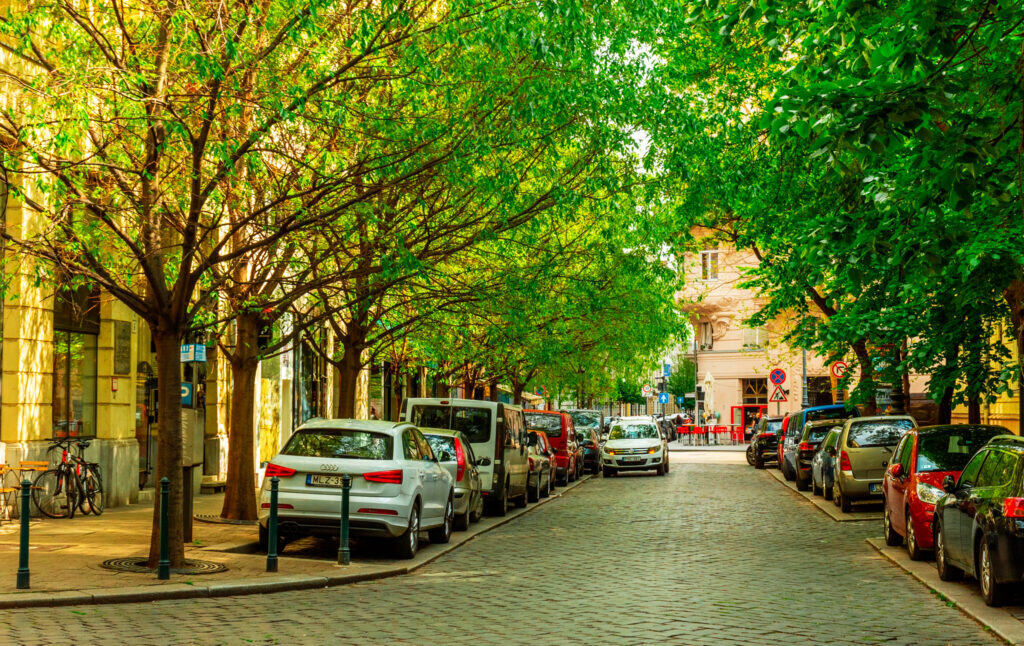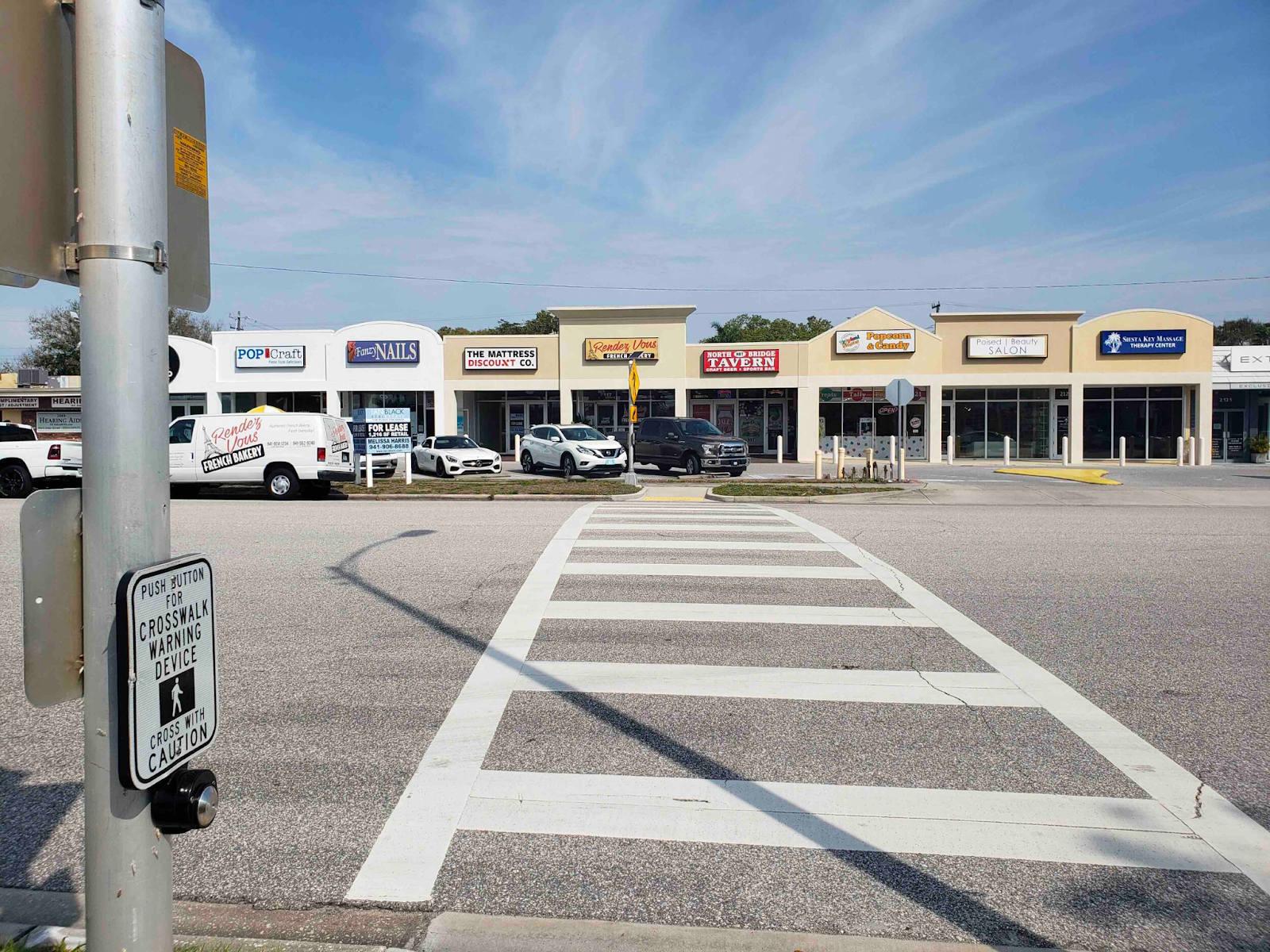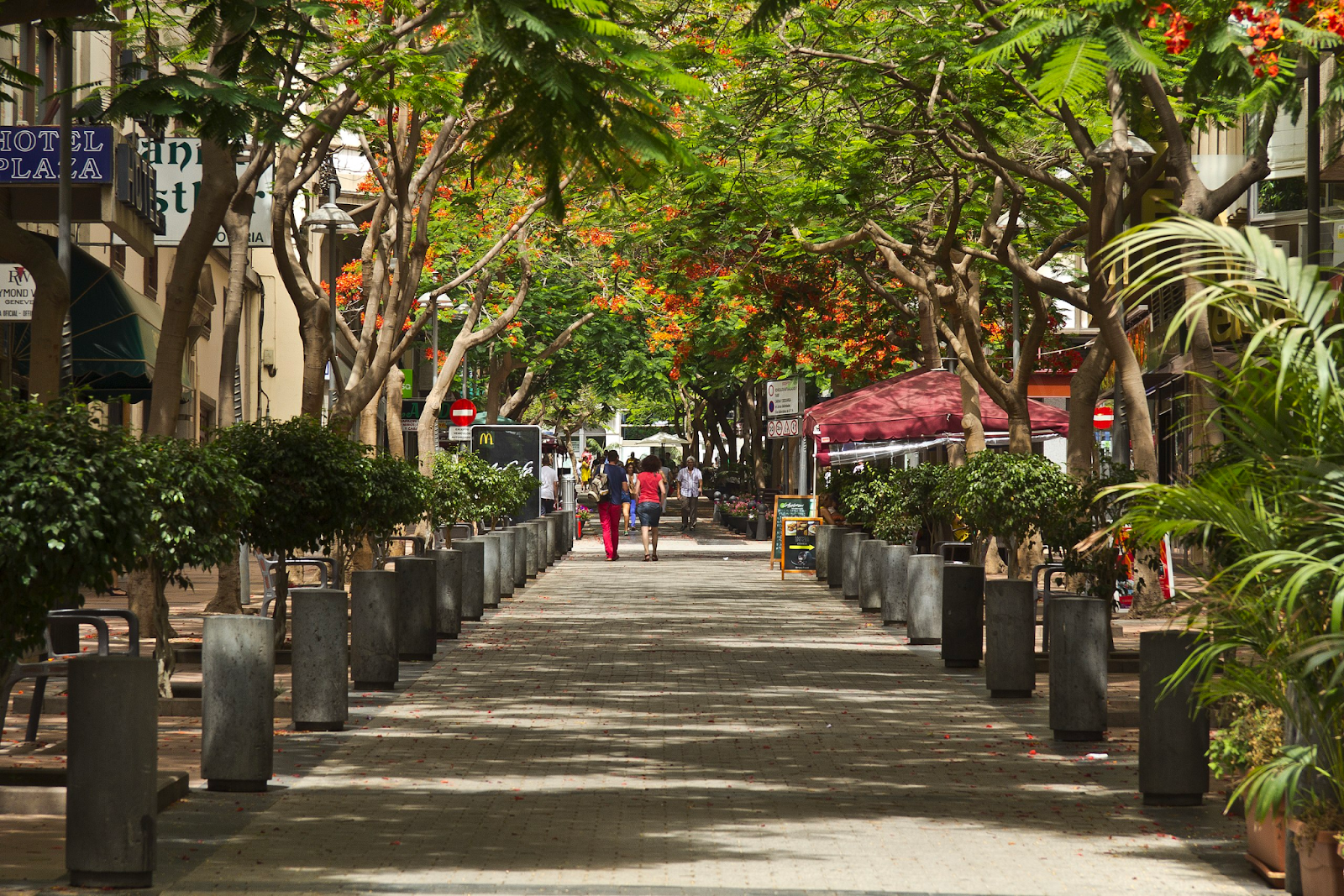
We Need to Get Serious About Universal Access to Shade
As global warming creates unprecedented deadly heat waves, being surrounded by shade trees is more and more important.
Trees are wonderful. There is no easier way to make an ugly space beautiful than to fill it with trees. Every Sunday, I go for a bike ride down Esplanade Avenue here in New Orleans, which is lined with majestic live oaks. The beauty of the trees keeps me happy and the shade keeps me cool. On a scorching summer day, a basic rule is that if you’re out in the sun, it’s unbearable and you want to die, but if you find a lovely shady place, and bring some cold drinks, you can enjoy yourself.
At the moment, it is very, very hot in a lot of places. Britain is seeing temperatures of up to 104F, the hottest ever recorded. (I wrote last week about how worried I am for my 88-year-old English grandmother, and how my worry also fuels my hatred of Joe Manchin, who insists on doing everything he can to make the problem worse.) Across Europe, wildfires are forcing tens of thousands of people to flee their homes, and hundreds have already died in the extreme heat. In the U.S., a record-breaking summer is seeing “flash drought” conditions from Oklahoma to Massachusetts. As humans continue to pump fossil fuel emissions into the atmosphere, with politicians almost completely indifferent to the problem, this is only the beginning. It will get worse and worse, even though heat is already the leading killer among extreme weather-events in the U.S.
What we need, first and foremost, is a militant political movement to avoid what the current leader of the United Nations calls humanity’s “collective suicide” from climate catastrophe. The New York Times reports, depressingly, that only 1 percent of voters identify climate change as the most important political issue of the moment. They are more concerned with short-term problems like gas prices, which is why Joe Biden is currently out fist-bumping a murderous dictator in the hope of securing more fossil fuels to burn. (Annoyingly, the Biden administration is not pursuing diplomatic options to end the war in Ukraine, even though that war is exacerbating the problems that are making it more difficult to address climate change.) It is critical to persuade voters to put pressure on elected officials to take major action to reduce emissions.
Because the goal of reducing emissions is paramount, efforts to reduce the consequences of climate change can seem secondary and slip out of the discussion. Conservatives who want to defend fossil fuel use often try to pivot the conversation to “mitigation” and “adaptation,” i.e., ways of getting used to global warming rather than ending it. But it’s still the case that since the effects of climate change are here right now, we need to minimize suffering as much as we can.
This means that we have to be committed to ensuring that our cities are shady places. The benefits of trees, as Max Jordan Nguemeni Tiako and Eugenia C. South explain in the Washington Post, are immense:
Take, for example, the leading cause of death in the United States — heart disease. Living in a green neighborhood is associated with lower rates of heart attacks, high blood pressure and diabetes in older adults. A 2015 study estimated that living on a city block with at least 11 trees decreased the risk of heart-related conditions in ways similar to increasing an individual’s income by $20,000 or being 1.4 years younger. Our own research this year showed that lack of tree canopy cover in urban neighborhoods is associated with higher risk of hypertensive disorders of pregnancy, a leading cause of maternal morbidity and mortality. Trees also help people feel happier, enhance well-being and improve mental health. … We’ve also demonstrated a decrease in prenatal stress among pregnant people with depression and anxiety based on the number of trees near their house. And trees help people feel more connected to one another, which is an underappreciated boon to health. Public safety is also impacted by trees. … In Philadelphia, our lab’s work has shown that greening leads to reductions in violent crime and improvements in how safe people feel. … Trees are well known for filtering pollutants and thus improving air quality, which is linked to a range of health benefits. In hotter months, their shade significantly reduces ambient temperature; a study of 108 U.S. cities found that the difference in temperature between the hottest and the coolest neighborhoods was as great as 13 degrees Fahrenheit, much of it attributable to uneven distribution in the tree canopy. Extreme heat not only sends people to the emergency room for heat stroke — it also exacerbates chronic diseases such as renal disease, with increased rates of acute kidney injury during hotter months.
All of this is in addition to the fact that trees are beautiful. And yet so much of the United States still looks like this:

…instead of like this:

Some of this, of course, is due to the fact that much of America is a giant parking lot (we have eight parking spaces for every car and more than one car for every adult). One major difference between the space in the first photo and the space in the second, other than the presence of abundant plant life, is that the second is designed for people rather than cars. But even parking lots can be made shadier—covering them with solar panels both keeps cars cooler (reducing the need, of course, to crank up the AC as soon as you get in) and produces green energy.
Plentiful shade should be a basic feature of our outdoor spaces. As global warming worsens, it’s going to be more important than ever that people are able to avoid having to stay out in the boiling hot sun. And yet access to shade is highly unequally distributed. Tiako and South note that “formerly redlined Black neighborhoods have the least amount of green space today, while predominantly White neighborhoods have seen an increase in tree canopy cover.” The New York Times notes the contrast between the “hulking trees lining canopied streets” in Beverly Hills and “the people waiting for the bus [straining] for some sliver of escape from the intense heat” in South Los Angeles. LA unveiled an ambitious plan a couple of years ago to plant tens of thousands of trees to address the disparity—anyone who wants to plant them can get seven free trees, paid for by the city—but the project has gone slowly, in part because “ new trees are often destroyed by vehicles or vandals before they can mature, while older trees are cut down by developers of new buildings, or transportation crews seeking to clear sightlines at intersections.” The city itself also often does little to maintain the trees, relying on the efforts of neighborhood residents. Unfortunately, many plans to make cities shadier are by developers who treat shade as a desirable amenity for the rich—see, for instance, Tampa’s plan to develop a beautiful new tree-lined downtown area, which of course will be totally unaffordable.

The Build Back Better plan actually included a substantial amount of funding for tree-planting, deliberately focusing on the shade gaps that deprive poorer people of access to nice trees. Of course, this was immediately mocked by conservatives—FreedomWorks said “The Democrats want you American taxpayers to shell out $3 billion for ‘non-racist’ trees.” But it was a good idea, the necessity of which should be more apparent as we struggle through another unbearable summer—and realize that things are only going to get worse.
Build Back Better didn’t pass, but the climate crisis is only going to worsen, so we have to redouble our commitment to trying to both end the use of fossil fuels and make bearable the consequences of climate change that have already become inevitable. Universal access to shade won’t solve our climate crisis but it’s essential to maintaining a livable world.




